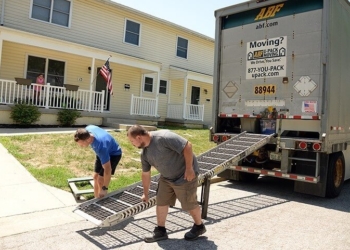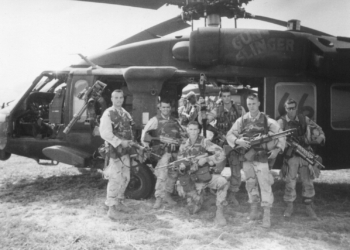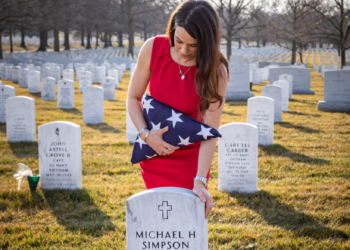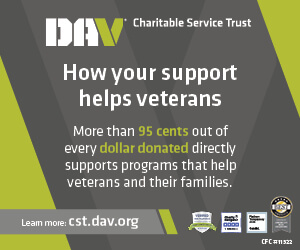The Department of Veterans Affairs (VA) announced this week it’s on track to eliminate tens of thousands of jobs but maintains staff reductions will not affect veteran care or benefits.
According to yesterday’s press release, the Department is “on pace to reduce total VA staff by nearly 30,000 employees by the end of fiscal year 2025, eliminating the need for a large-scale reduction-in-force.” The announcement adds that “VA has multiple safeguards in place to ensure these staff reductions do not impact Veteran care or benefits.”
“All VA mission-critical positions are exempt from the DRP and VERA, and more than 350,000 positions are exempt from the federal hiring freeze,” the release states.
The report’s findings
Earlier this year, when several thousand VA employees were terminated, veteran service organizations expressed concerns about the move, particularly in light of VA’s recent suicide report.
“When the national suicide prevention report comes out showing the veteran suicide has increased, and then we’re also being told that the psychiatric department is down in staffing, well, how does that work to prevent suicide when you don’t have the people that are evidence-based, trained efficiently and effectively in all methods that VHA [Veterans Health Administration] has done so well with?” said Jon Retzer, Disabled American Veterans (DAV) assistant national legislative director.
More than 6,400 military veterans died by suicide in 2022, according to VA’s 2024 Annual Veteran Suicide Report, an increase of three individuals from 2021, though still lower than the 10 to 12 increase in previous years.
Dr. Mark Upton, deputy to the Deputy Under Secretary for Health, told U.S. Military Publishing via email that one of the biggest takeaways from the report is that supporting veterans at risk of suicide “is a mission we all have a role in advancing.”
“Every voice — community members, veterans service organizations, Congress, families, caregivers, friends, media, and other veterans — and every effort, makes a difference,” he said. “VA offers Resources for Suicide Loss Survivors, including suicide postvention services, which provide organized, immediate and ongoing support following a suicide loss. VA is committed to offering and continuing to build a range of resources and a network of support for all veterans.”
Other report highlights include:
- There were an average of 17.6 veteran suicides per day; of those, seven per day received care from the Veterans Health Administration and 10.6 per day were classified as “other veterans.”
- More than 73% of veteran suicides in 2022 involved firearms.
- Age-adjusted suicide rates among female veterans decreased more than 24%, while male veterans saw a 1.6% increase.
Veteran suicide prevention a ‘clinical priority’
The report also states that veterans who received care through VHA — notably those with mental health or substance abuse conditions — “have long been identified as at increased risk for suicide.”
However, many of those included in the total deaths by suicide “never received any form of medical care whatsoever,” according to Retzer. What the data shows, he said, is not that veterans who receive care from VHA or the private sector are “more at risk,” but rather that they’re being tracked.
When veterans receive care, they’re already “at a place where they’re in dire straits,” said Retzer, an Army and Army National Guard veteran.
“They’re needing help. They’re reaching out for it because they’re at a point where they’re just on the cusp of just going to the wrong side. So we really want to look at it [from] a standpoint that’s a good thing,” Retzer said. “So what we’re seeing is that VA, the community and in Congress have really put this as a clinical priority across the board. This is a national issue to begin with, suicide prevention.”
Congressional advocacy efforts
DAV is interested in how VA can amend its contracts with community care providers to include cultural competency training, lethal means safety, along with counseling for suicide prevention and substance use and abuse, Retzer said. That would give civilian providers the “same quality of training and better understanding of how to deal with a veteran,” he added.
The Staff Sergeant Parker Gordon Fox Suicide Prevention Grant Program is another focus for the organization. Congress allocated $174 million for the program, but new legislation is needed to ensure the program (and its related funding) doesn’t expire.
When it comes to lethal means safety, Retzer said cable locks on gun storage were a “great start,” but more “time and space” needs to be created. One DAV initiative is to build “psychological factors” into gun boxes themselves. Those factors could include messaging on the front of the box (such as information for the 988 crisis line) and adding a photo slot for a picture of something that matters to the veteran.
Upton, the VA spokesperson, said studies show that crisis line callers are more than five times more likely to experience “decreased distress” and nearly five times as likely to report “less suicidal ideation at the end of their call.”
“The 2024 National Veteran Suicide Prevention Annual Report reveals a reduction in suicide rates among Veterans in VA health care in the initial month following contact with the Veterans Crisis Line for 2020 and 2021, relative to the high rate in 2019,” Upton said.
The crisis line, according to Retzer, has been a “lifesaver for hundreds of thousands of veterans.”
“I think education components, the outreach, that’s a good thing, and we’re still encouraging VA and the community along with the congressional support to fund and resource that movement,” Retzer said.
However, federal employees who were working on projects related to the crisis line were among those affected by recent cuts from the Department of Government Efficiency (DOGE).
Upton said the crisis line is “fully operational and not experiencing any disruptions.”
When it comes to eliminating positions within VA, Retzer said VA needs to “be mindful of what they’re cutting,” particularly when it comes to programs.
“Right now, we are very, very concerned with regard to staffing and even the implications that we see now just recently about the research departments,” Retzer said. “And they’re losing very tenured employees, and also what’s going to happen with the data on research that they’ve already had with regard to the modernization and things of that nature with the VHRM [Veterans Housing Rehabilitation and Modification]?”
Lower suicide rates for vets with mental health diagnoses
From 2001 to 2022, suicide rates fell for veterans in VHA care with mental health diagnoses. These reductions include diagnoses of:
- Anxiety, -36.1%
- Depression, -34.5%
- Post-traumatic stress disorder (PTSD), -31.6%
- Alcohol use disorder, -13.7%.
Source: VA spokesperson











































